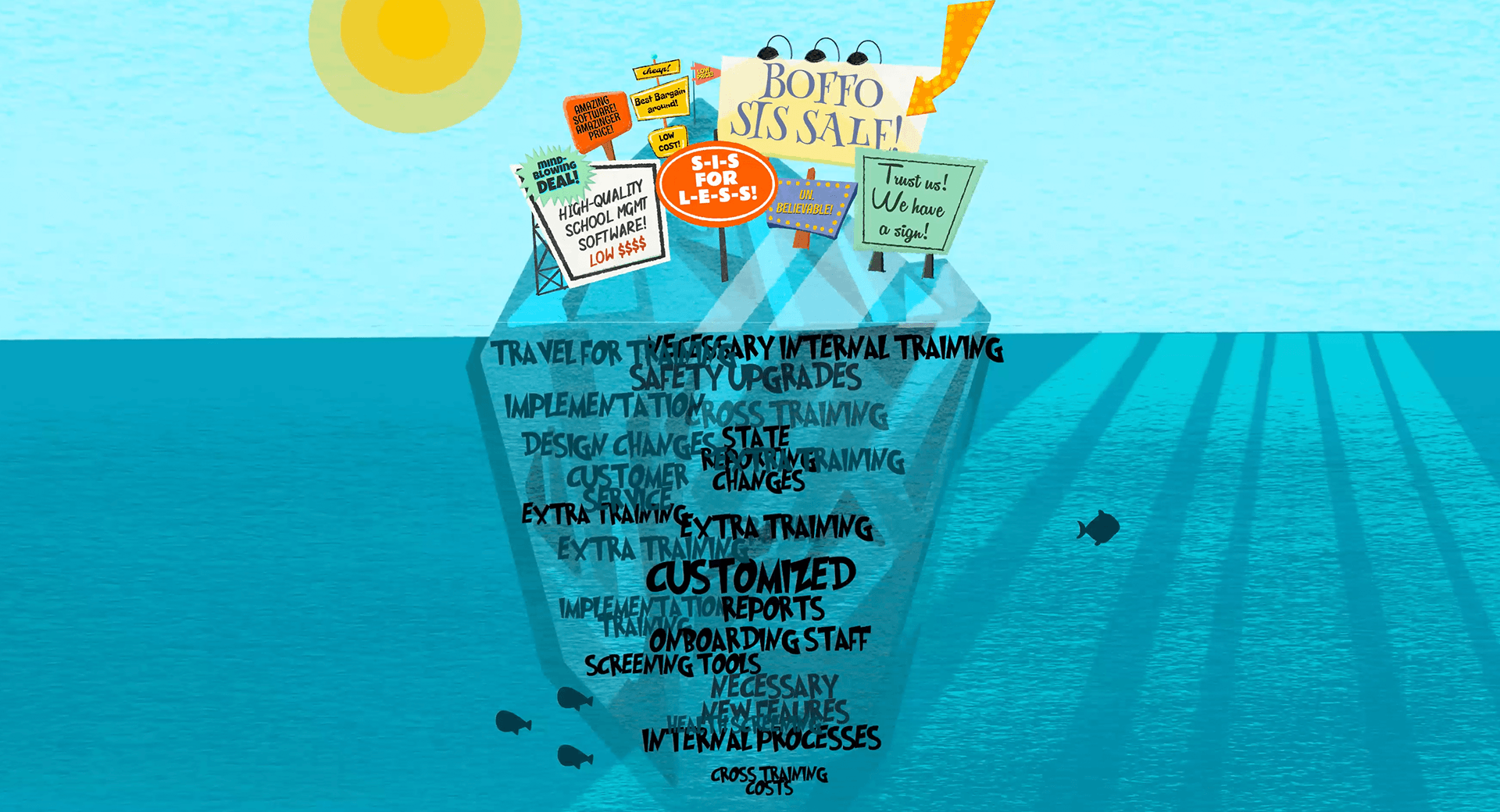
Nice price? What’s the catch?
On the surface, a prospective SIS might look perfect. But what’s lurking underneath? While lots of vendors claim to be all-inclusive, after implementation some districts suddenly feel a little lost at sea. Here’s what to look for from the start of your SIS purchasing journey to ensure you’re well supported for years (even decades) to come.
Implementation and interoperability
What they might promise: Someone will be by your side every step of the way. Our system integrates with the most widely used edtech programs in K12 schools.Sounds good on paper, but once a revolving door of implementation staff takes over, it might feel more confusing than comforting. Instead, ensure your new software partner plans to pair your crew with a dedicated implementation team for the delicate and time-consuming process of switching SIS solutions.
Next, while reading “widely used” also piques interest, dig deeper to figure out exactly which systems the new SIS will connect with—and how they go about doing so.
Third-party systems aren’t the enemy, they’re part of what makes school happen. Integration with the most popular learning management systems is a given; but can the SIS connect with systems you’re already using—even if it’s not the most cutting-edge option?
If you’re hesitant to start the conversation because of a lack of technical knowledge, your SIS team should be equipped to both explain their interoperability options in plain English and reach out to your IT team with specifics.
Security
What they might promise: We offer robust security measures aligned with industry expectations.Now’s the time to settle in for a long conversation about security strategies. While it’s important for a vendor to share certifications, security protocols, and other specific credentials, it’s equally important to hear about their high-level approach to security.
Proactive is the name of the game. A cloud-based system offers a way to ensure your data is protected from physical disasters. Multiple backup plans ensure your data can be recovered no matter which threat you’re facing.
But security is not limited to disaster recovery alone. Automatic updates keep your system safe from threats by identifying and fixing vulnerabilities before they can be exploited. If your software partner is committed to securing your data, they’ll be happy to spell out the proactive security approaches they have in place to keep your district safe.
Support options
What they might promise: Our support team is standing by to answer all your questions.Sounds cozy, right? What more could a customer want? First, let’s acknowledge that support takes many forms. Is your new SIS vendor equipped to meet all those support needs?
Implementation obviously requires some intensive training. But what about professional development once implementation is a memory? How about when new staff join your team? If you’re on your own for training post-implementation, or on the hook for additional training costs, support is lacking.
Comprehensive support must include both self-service options and a chance to engage with experts to answer deeper questions. Consider the time-saving impact of having a quick search through a help center in the middle of the day, so users can answer their own questions without ever contacting someone else.
Options for support contacts are also worth inquiring about. Support should ideally be available via phone, email, messaging, and live chat—whatever works best for your team. Can your users afford to spend hours on hold during the busiest times of the school year?
Long after implementation wraps up, a strong support partnership full of different options for different users must continue (at no additional cost!).
Reporting
What they might promise: We will work with you to produce all the reports you expect.Ready to walk the reporting walk? Ask to meet the reporting team dedicated to your state.
Support isn’t limited to interface snafus and building new processes. Reporting to state and federal agencies takes up a lot of time and effort. How will your new SIS stand up to the challenge?
The dedicated reporting team should not only be experts in K12 reports, but also specifically for your state. These pros should know the ins and outs and brand-new changes as soon as they’re finalized. It will ease the pressure on you alone to produce trustworthy reports.
All (yes, all) of these features, support teams, and processes should be a standard part of your SIS agreement—it’s not too much to ask!
Follow-up resource: Are you ready for a new SIS?
Sure, it gets the job done, but could your SIS be even better? Learn more in this video playbook.WHAT'S NEXT FOR YOUR EDTECH? The right combo of tools & support retains staff and serves students better. We'd love to help. Visit skyward.com/get-started to learn more.

|
Erin Werra Blogger, Researcher, and Edvocate |
Erin Werra is a content writer and strategist at Skyward’s Advancing K12 blog. Her writing about K12 edtech, data, security, social-emotional learning, and leadership has appeared in THE Journal, District Administration, eSchool News, and more. She enjoys puzzling over details to make K12 edtech info accessible for all. Outside of edtech, she’s waxing poetic about motherhood, personality traits, and self-growth.




